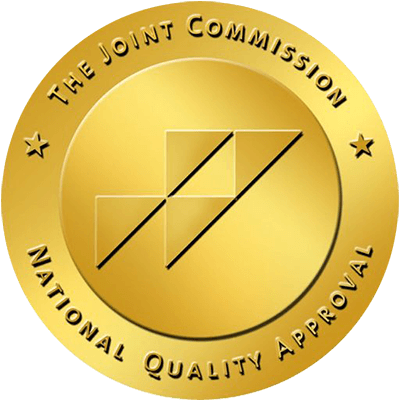Written by Ashley Kane,
Brightside Health
6 Minute Read

Medically reviewed by:
Erin O'Callaghan, PHD
Director of Therapy
10 Minute Read

The rates of depression are growing.
As the shape of our working environments and day-to-day lives begin to change, depression is becoming more prevalent among many people. To seek therapy and medication treatment, it’s important that you can recognize symptoms in yourself and others.
Let’s take a look at how depression in women and men differs, and explore why that is.
Depression by gender
Before we get too far, we first need to acknowledge that gender is nothing more than a social construct, formed by:
- Lived experiences
- Societal norms
- Socialization
- Other identifiers
We also want to separate gender from biological sex, as these are not the same thing.
That’s not to say that different gender groups (the social constructs of “man” vs “woman”) experience depression in the same way.
Science suggests that there are differences in depression in men vs women. These group differences are primarily a result of socialization by society or other influences, not by biology.
Let’s take a look at depression in women and men and explore where they diverge.
Do men and women have different symptoms of depression?
Different people experience depression in different ways, regardless of gender or biological sex.
Ultimately, the core symptoms of depression are the same for women and for men.
These symptoms might include:
- Having little interest or pleasure in doing things
- Feeling down, depressed, or hopeless
- Feeling tired or having little energy
- Poor appetite or overeating
- Feeling bad about yourself, or feeling like a failure
- Trouble concentrating on things
- Thoughts of self-harm or suicide
For both men and women, depression may feel like profound sadness. Others feel worthless, and some feel nothing at all.
Some of the key types of depression affect everyone. All genders and biological sexes might experience either:
- Major depressive disorder
- Persistent depressive disorder
- Seasonal affective disorder
Even though men and women both experience depression, research suggests that women are more likely to report experiencing symptoms of depression and to seek help.
This may explain why, as the Mayo Clinic explains, “Women are nearly twice as likely as men to be diagnosed with depression.”
When do gender differences in depression occur?
There are some forms of depression that women (biologically) experience that men do not. This divergence tends to occur post-puberty. Some are tied to the menstrual cycle, and others are from social conditions that occur as women age.
- Premenstrual dysphoric disorder: In some women, premenstrual syndrome (PMS) might morph into premenstrual dysphoric disorder (PMDD). This is a health condition that results in severe irritability, depression, or anxiety within a week or two before menstruation. Symptoms usually disappear within a few days after the start of your period.
- Pregnancy: Similarly, pregnancy can contribute to depression symptoms, especially around postpartum. Postpartum depression is a serious condition that may cause serious mood swings, feelings of detachment, anger, resentment, and even thoughts of harming the baby or self.
- Menopause: This too, can contribute to an increased risk of depression that is unique to biologically female people.
Depression can also stem from societal or social conditions that are unique to women in the United States and many other cultures.
- Women tend to lack power in our society and are expected to contribute in unique ways at home.
- Women are often in undervalued work roles that contribute to burnout and self-blame.
An example of these differences is that women often take on planning or other tasks that men tend not to take on and are often systematically overlooked for promotion and leadership opportunities, which leaves them feeling overloaded.
Do males and females respond in similar ways to depression?
One of the biggest differences between men and women when it comes to depression is in the ways that gender groups tend to respond to the symptoms when they occur.
Over 30% of men experience a period of depression in their lifetime. Men are frequently socialized to not process emotional reactions. Gender stereotypes related to toxic masculinity often lead to the false belief that men don’t cry, and that showing emotional vulnerability is somehow not manly or masculine can negatively affect many men. Often this leads men to seek logistical ways of coping with depression symptoms that can be harmful.
As a result, men with depression tend to self-distract from their internal emotional experiences and may turn to substance abuse more frequently than women. This can lead to tragic outcomes. According to the Centers for Disease Control and Prevention, men are more than four times as likely to die by suicide than women.
Women are often socialized to engage in more social support and tend to cope with depressive symptoms more effectively than men. Women are statistically more likely to report their symptoms and to seek help than men.
For women, depression is also prevalent. “Approximately 12 million women in the United States experience clinical depression each year,” according to Mental Health America, and “one in eight women can expect to develop clinical depression in their lifetime.”
Depression in women can also contribute to other health problems and mood disorders. Depression is closely tied to the prevalence of eating disorders, anxiety disorders, and other diagnoses.
What to do if you are experiencing symptoms of depression
Depression can be debilitating for women and for men, but it is also highly treatable. If you are concerned about depression, talk with a mental health professional. Treatment possibilities for depression include therapy, medication, or both. At Brightside Health, you can access treatment from home and meet 1:1 with a dedicated provider.
If you are experiencing emotional distress or thoughts of suicide, please seek help immediately:
- Text HOME to 741-741 to chat with a crisis counselor urgently.
- Call 800.273.8255 to speak with a crisis counselor.
- Call 911 if you are experiencing an emergency.
If you are experiencing symptoms of depression, Brightside Health can help. Our mental health professionals are ready to help you get back to being you.













